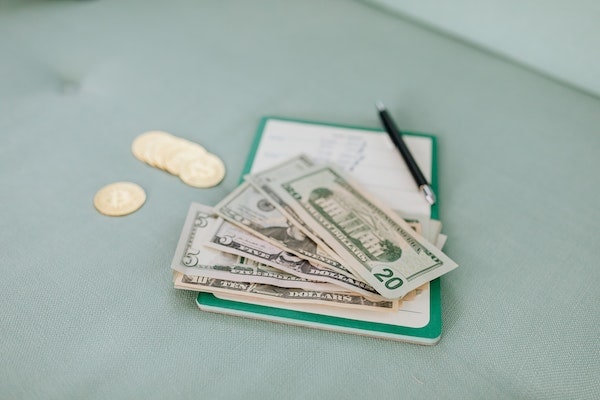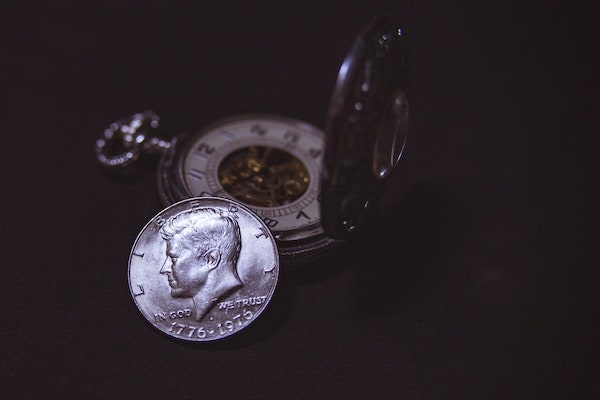How Financial Minimalism Protects Your Savings With These 5 Hacks
Share this content :

How many things do you have in your house that matters in your life? Many Americans think the amount of stuff in their house is necessary to their life. They stay attached to what they purchase and find it hard to let go after becoming unusable. The average American has over 300,000 things in their household.
Amazingly, people still buy more things than they’ll ever use, even with all their clutter. For example, US children comprise approximately 3.7% worldwide, yet they own almost 50% of the entire planet’s toys and children’s books. Many parents and adults may not notice how extreme that ratio is. Excess in anything is a problem, however, with so many people making impulse purchases and overspending for luxuries.
If you want to avoid overspending, then minimalism is the way. This mindset teaches us to live within our own needs and cut out anything that isn’t vital to our lives. Here is how financial minimalism works and how you can apply it to your expenses and budget.
What Is Financial Minimalism?
First, let’s explain what “financial minimalism” is. Simply put, it’s a mindset of purchasing and spending your money only on the necessities in your life. Contrary to popular belief, you aren’t forced to throw away and remove everything in your house. Instead, financial minimalism makes you look at what you spend on and how much it benefits your life.
Look at the receipt you got after buying groceries. How much of the list comprises ingredients for meals such as breakfast or brunch? You can categorize these things as “necessities.”
Now, look at everything else that you bought. For example, how many chocolates did you get with your latest purchase? Did you buy any new shoes and how much did they cost? You can categorize these things as “excess” because while they serve a purpose, they aren’t as vital to your lifestyle. Unless you only bought one pair of shoes to use every day, it’s not likely that the newest Air Jordans are important to you.
Principles of Financial Minimalism
Now that we understand the main idea of financial minimalism let’s delve further into key concepts that make it effective. Here are three principles of financial minimalism that you can apply to your daily life.
Avoiding Excess
The exercise above that uses your groceries concerns the concept of excess. As we said before, whatever you buy or spend isn’t crucial to your life in some way if it’s in excess. The world won’t end if you don’t always get what you want. One distinction we should make is the difference between excess and treat. When you treat yourself, it’s supposed to be a reward for what you’ve done. If you’ve been working long nights for the past two months, paying for a massage is a good treat for your efforts. Now, is a massage necessary? Not exactly, but it can help you if done sporadically

However, if you’re one of those people who like to take massages every week, you might need to reconsider your subscription. There are inexpensive ways to re-energize and revitalize your body without paying a hefty sum for an hour-long massage. More importantly, it’s not ideal for spending something that can cost up to $100 every weekend. Avoiding excess means learning to live without luxury, and sometimes, you have to make sacrifices on what amenities you enjoy. It’ll benefit your wallet in the long run.
Resource Management
Everything you purchase is a resource you can use in life. Resource management can keep you from getting too many things. Stores make promotional deals when they have a surplus. Too many things in their archives will leave no room for new items or services. That’s why financial minimalism cares so much about your inventory. Knowing how much you have is an excellent way to control how much you add.
When you manage your resources, always consider how much you need something in your life. For example, you need a car to go to work so investing a monthly rate for your vehicle and its insurance plan is necessary. However, are there accessories to your car that you won’t need? Do you need a custom paint job or new decals to make it look good? Those resources, while fun, aren’t practical to someone maintaining a 9-5 work shift. You’re better off investing cash on other concerns, like side hustles or home renovation projects.
Time is Money
Many executives and career professionals like to use the phrase above, but it’s not a business tactic in financial minimalism. Instead, it’s a perception of how you can view your money. Every purchase you make is time and effort spent. Each job provides rates and figures for the amount of work you spend in the office. In other words, your 8-hour shift converts into money.

The next time you want to spend on a high-class latte or an expensive TV, don’t phrase it as a question of numbers. People can be overconfident when thinking their four-figure savings can handle the next purchase. Instead, equate your salary to the time you spent working the cash at hand. Once you think about the value of expensive shoes in terms of days or hours, such as “These shoes cost me three weeks in the office”, then it’ll be easier to say no.
Five Techniques for Practicing Financial Minimalism
Once you understand the three principles of financial minimalism in your life, you’ll be ready to manage your expenses and focus on protecting your financial future. If you’re unsure of how you can apply it in the real world, here are five techniques to help you practice the concepts.
1. Review Your Receipts Every Week
The exercise of the grocery receipt can apply to all other types of purchases, both online and in person. Collect all of them into one folder or file, then pick a day in the week when you have a few minutes to sit down and reflect. Look at each item you bought and see which ones were necessary and which you could avoid. To make it easier, verbalize your expenses as you read them. Once you finish, list all your essential expenses on one sheet of paper and your excess on the other. See how much you could have removed.
Within time, you’ll be able to spot what expenses aren’t worthwhile and avoid them before you lose your money.
2. Use Cash Instead of Credit
Credit cards make it easy to buy things because you can swipe the card and get your purchase without issue. Unfortunately, it can easily lead to overspending because you typically don’t see how much of your credit is available. Without proper oversight, you risk burning your card before the week ends. To minimize your purchases, pay for everything with cash. The act of physically handing away your money for something you want is hard to forget. Soon, you’ll find yourself holding your wallet tight and pulling it out only when needed.
3. Create Emergency Funds
Saving money is difficult when you don’t know how to use it. That’s why some people make impulse purchases. They feel their cash would go unused if they don’t spend it immediately. However, if you spent so much money and then got into an accident, you’d be left in dire conditions as you try to pay off the hospital bill. Save yourself the heartache by investing in an emergency fund, a resource of cash that you use only for unexpected purchases. Think of possible disasters and problems that you want to be able to afford to fix. Examples include disaster repair, medical emergencies, and roadside accidents.
4. Have Fun With Free Things
The title above might be misleading. You might think of gifts or complimentary items, like the free toothbrushes and combs you find in hotels. However, we mean the hobbies and habits that cost little to nothing in your life. For example, you might feel stressed and need to cool off. You could buy a cappuccino or an expensive cake slice, but that’d be wasting your money. An alternative is walking off the stress. Simply strolling down the neighborhood or across the local park is an excellent way to relieve any tension you’ve built up. And the best part? It costs absolutely nothing.
5. Donate Or Sell Your Excess
Sometimes the biggest temptation is lying inside your own house. If you have multiple gadgets or toys or other times that you don’t need in your life, it’s unwise to leave them be. First, that mindset builds up clutter even if you manage your expenses well. Two, it’s unproductive and unreasonable to keep something that isn’t necessary.
An excellent way to surrender your excess is by selling them, giving them away as gifts, or donating them to a local charity. Many people in the world may need the things we have. While you may not want your sneakers anymore, someone else might need a new pair of shoes. By donating your excess to others in need, you give them something precious they can use in their lives. For those who sell their belongings, you’ll also earn more money on the side by giving away something functional but not crucial in your life.
In Summary
We live in a world full of excess, and many spend too much on things we don’t even use. By following the philosophy of financial minimalism, we can learn to cut out the excess in our lives. If we treat our expenses as necessary, we can deprive ourselves of luxuries that don’t matter. The sooner we clear our houses and bills of useless junk, the sooner we can save more money for the times when we need it most.
Share this content :
Copyright © 2023 Munif Ali. All rights reserved.

